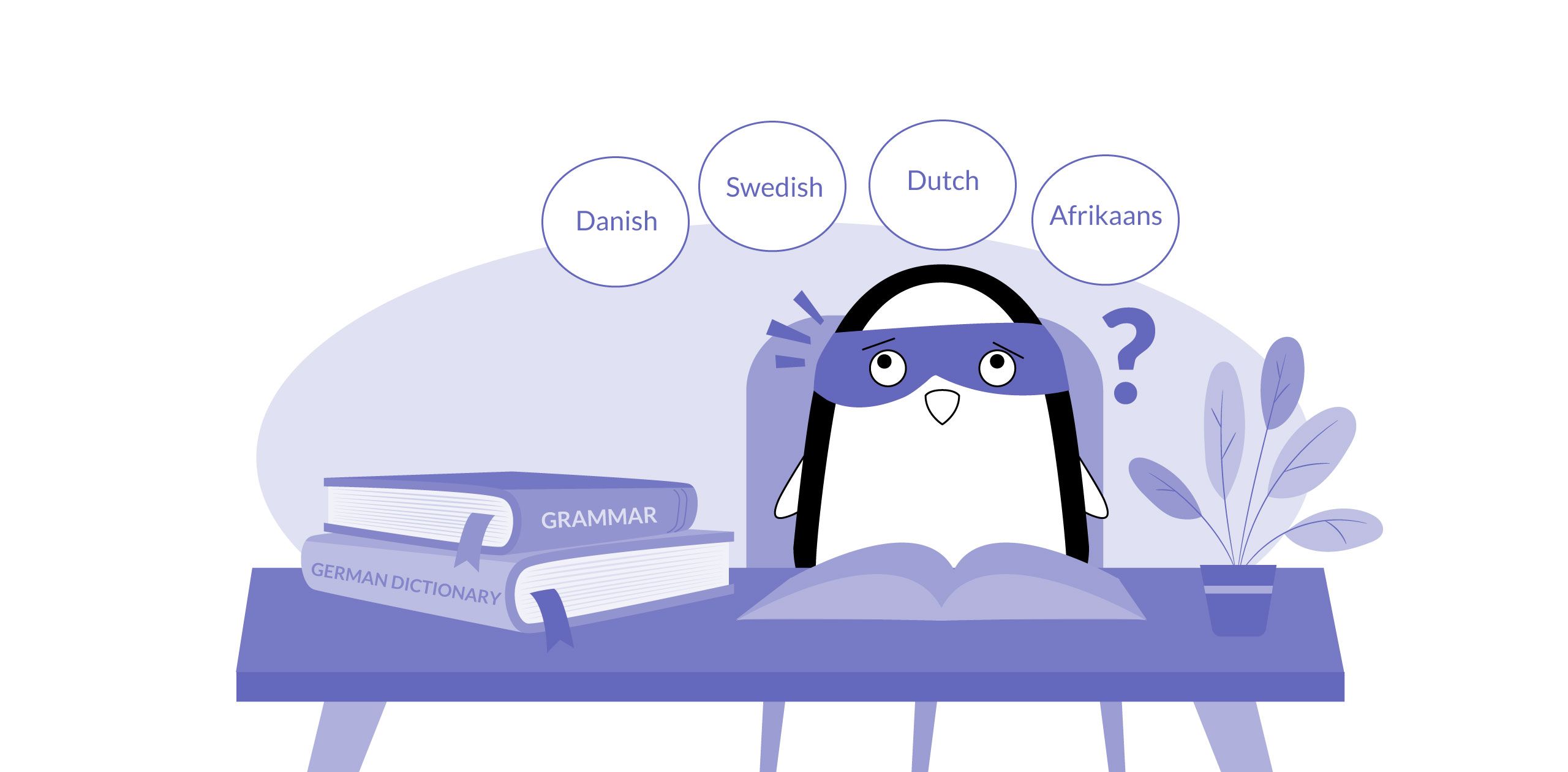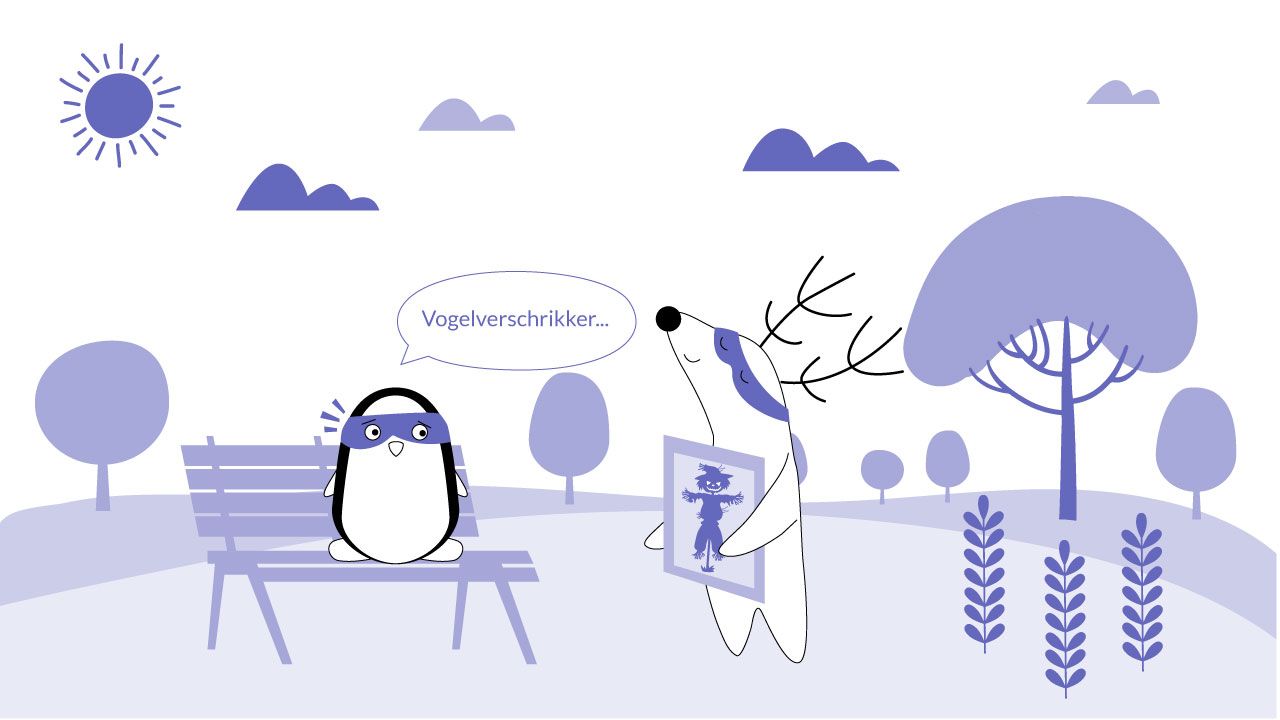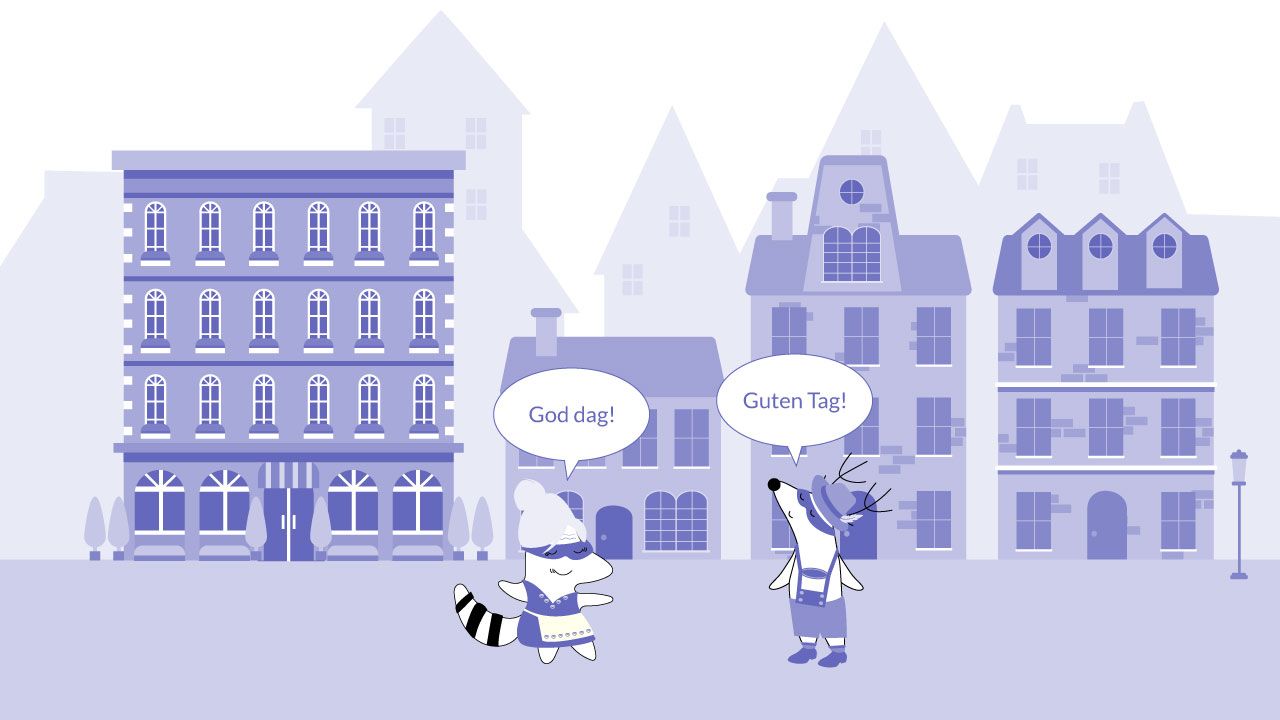
German is one of the most widely spoken Germanic languages in the world. It is the official language in Germany, Austria, and Liechtenstein, and is spoken in parts of other countries. With a rich culture and a long history, it’s one of the most popular languages to learn today. But, what if you have already reached a fluent level and want to dive into it even more?
We suggest moving on to learning another language – after all, knowing several languages has a lot of benefits both for health and career. And, to make it easier, how about learning something that will come easier after German?
There are many different Germanic languages, all of which share common roots. While some of these languages, like German and Dutch, are quite similar, others, like Icelandic and Faroese, are quite different. Below, let's explore the five most interesting choices together.
Learn German with Langster
But First... English
Did you know that English is the most widely spoken Germanic language in the world? In fact, it’s so closely related to German that learning one can help you learn the other. And, with over 375 million speakers, knowing English can really come in handy when traveling or doing business internationally.
Let’s explore some of the main similarities and differences between German and English in detail:
Similarities
English and German are both part of the West Germanic languages, which also includes Dutch, Afrikaans, and Yiddish. This is just one group in the Indo-European language family, but they all share similarities.
When it comes to English and German, there are grammar similarities – both languages have two genders (masculine and feminine) and similar tenses. Moreover, a great deal of vocabulary in the German language is similar to English.

This makes learning English much easier for German speakers than for speakers of Romance languages like Spanish or French – and the other way round. In fact, many Germans find they can get by quite well with just a basic knowledge of English.
Differences
However, there are also some important differences between English and German. For starters, German has different word order, pronunciation, case system, verb conjugations, and some German grammar rules that can be tricky for English speakers to get their heads around.
So, if you want to learn German or another Germanic language and know English, you’re in luck – it will be much easier than learning a completely new language. But remember, there are still some important differences between most of them, so be prepared to deal with some challenges.
Dutch
If you’re looking for a language that’s similar to German but not quite as challenging, Dutch might be a perfect choice. It is the official language of the Netherlands and Belgium and is spoken by around 24 million people worldwide.
Here's what you need to know about it:
Language Learning Difficulty

Dutch is very similar to German, both in terms of grammar and vocabulary. In fact, many Dutch words are cognates – that is, they look and sound similar to their German counterparts. However, don’t say that to the Dutch people; you’ll offend them easily by suggesting that their language is similar to German.
Moreover, Dutch also has only two genders and easier, more consistent plurals. This makes learning Dutch relatively easy for German speakers, especially if you already know English.
Similarities to German and English
As we mentioned, Dutch is similar to both German and English. In terms of grammar, Dutch has no case system, just like English, and overall has a simpler grammar than German.
In terms of vocabulary, there are many words similar to both German and English – they are either the same or can be easily deciphered. For example, the Dutch word for ‘dog’ is ‘hond,’ which sounds very similar to the English word ‘hound,’ and German ‘hund.’
This makes learning Dutch relatively easy for English speakers, especially if you already know some German.
Difficulties of Learning Dutch
However, there are still some important differences between Dutch and both English and German – especially when it comes to grammar. For example, Dutch has no case system and simpler word order, without the inversion of phrases for questions and the movement of subordinate clauses to the end of the sentence.
Pronunciation can also be very difficult for foreigners, as Dutch uses a lot of guttural sounds that don’t exist in German. There are also many different vowel sounds and some quite different spelling rules, so this will definitely be your main challenge.
However, don’t get disinterested: even though there are some differences, they mostly make the language learning process easier, with the lack of complex grammar rules and lots of similar vocabulary. So, definitely give Dutch a try if you want to.
Danish
Danish belongs to the group of contemporary North Germanic languages (also called Scandinavian languages, by the way), which means it differs much more from German and English than Dutch. Spoken by around 6 million people, mainly in Denmark, it is also the official language of the Faroe Islands and Greenland.
If you’re up for the challenge of learning it, here’s what you need to know:
Language Learning Difficulty
Danish is a bit similar to both German and Dutch, sharing some features with both languages. However, it is considered to be the hardest Scandinavian language for English speakers to learn.
Nevertheless, it has a much simpler grammar system than German (no case system and verb conjugation, for starters), so the main challenge of learning Danish is its Scandinavian pronunciation.
Similarities
The main similarity between Danish and German is vocabulary. Thanks to the common ancestry of these Germanic languages, they have quite a lot of similar words. And, even if there are differences in vocabulary, they mostly follow predictable patterns. For example, A ‘p’ or ‘b’ in Danish might turn into an ‘f’ in German due to the consonant shift.
When it comes to English and Danish, vocabularies may differ a bit more – this is because English has many more French loan words than other Germanic languages. However, English is close to Danish in terms of grammar – for example, using modal verbs to express moods (and not verb conjugation).
Difficulties of Learning Danish
The biggest difficulty in learning Danish is its pronunciation, which is different from both English and German. For example, there are no ‘soft’ consonants such as ‘c’, ‘g,’ or ‘j,’ and many vowel sounds.
Grammar can be tricky sometimes. While Danish doesn’t have case endings like German, it does have a complicated system of articles and unique plurals, as well as a funny number system based on multiples of ten.
Swedish

Swedish is another North Germanic language, spoken by around 10 million people in Sweden and Finland. It is also one of the two official languages of Finland (along with Finnish), as well as an official minority language in some other countries.
Here are some things you need to know about learning Swedish:
Language Learning Difficulty
Swedish belongs to the same family of languages as Danish and Norwegian, so it’s not that different from them. This means that learning it can be a bit more difficult than learning West Germanic languages.
Nevertheless, Swedish is considered to be one of the easiest Scandinavian languages for English and German speakers to learn. Let’s see why:
Similarities
Just like other Scandinavian languages, Swedish has a whole bunch of similar vocabulary with German due to the influence of the Low German dialect in the Middle Ages. However, when learning Swedish after German, beware of the false cognates: there are many words that sound the same but have different meanings.
When it comes to English, there are also many similarities when it comes to vocabulary. However, due to the differences in pronunciation, these might not seem so obvious in oral speech.
Difficulties in Learning Swedish
The main difficulty in learning Swedish is, of course, its pronunciation – just like with other Scandinavian languages. There are a few extra vowel sounds and 3 extra letters in the alphabet (Å, Ä, Ö), which can be confusing – and not just at the very beginning, but overall when using the language.
Another thing that might be tricky is grammar. Unlike German, Swedish has two completely different genders: "neuter" and "utrum" (a merged masculine and feminine gender), and adjective agreement. Fortunately, Swedish doesn't have a case system or verb conjugation, so at least you don’t have to learn them.
Afrikaans

Afrikaans is a West Germanic language, spoken mainly in South Africa and Namibia. It is considered to be a daughter language of Dutch – in fact, it used to be called ‘South African Dutch’ until the early 20th century.
Nowadays, around 16 million people speak Afrikaans as their first language. And, even though it is not an official language of the UN, it is recognized as a minority language in the European Union.
So, how hard is learning Afrikaans? Let’s take a closer look:
Language Learning Difficulty
Generally speaking, Afrikaans is not that difficult for English or German speakers to learn. One of the reasons why it is considered easy is because there are many similarities between Afrikaans and West-Germanic languages in terms of vocabulary. In fact, around 60% of the Afrikaans vocabulary is derived from Dutch, which is also a West Germanic language.
Another reason why Afrikaans might be easier for you to learn is because it doesn’t have grammatical gender like German, has fewer tenses than English, and its verbs are not conjugated.
Similarities
In terms of vocabulary, Afrikaans is very close to both English and German – moreover, in written speech, it can be pretty easy to determine which words are from Germanic origin due to them looking alike.
Nevertheless, in oral speech, it might not be so simple because of the very strong influence of Dutch pronunciation.
Difficulties in Learning Afrikaans
One of the difficulties you might encounter when learning Afrikaans is its pronunciation. This is because it has been influenced by many different languages, such as Dutch, Malay, Portuguese, and African languages.
Grammar, even though much simpler than English or German, can still bring some challenges. Afrikaans relies almost entirely on word order and prepositions to identify parts of a sentence, which makes it a very analytical language.
Bottom Line
Of course, these are not all Germanic languages – just a very small group that we deemed the most diverse and interesting for learners. But, we can’t say for everyone. Maybe you would like to learn Norwegian or Icelandic, or even some extinct East Germanic languages like Gothic or Burgundian?
You’re the one who knows most about your linguistic interests and desires. The only thing we can do is to persuade you to learn other languages or go deeper into the ones you already know. So, even if you don’t want to dive into Swedish or Dutch, consider learning more about German dialects or business German – and never stop your eagerness to discover more.









